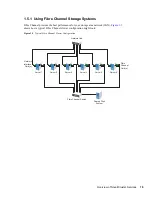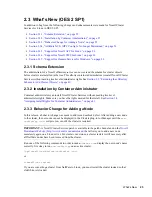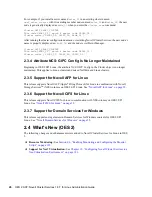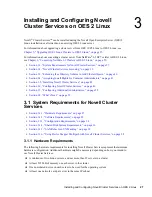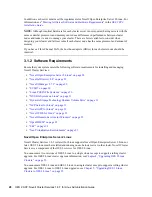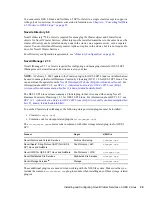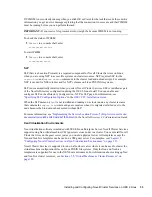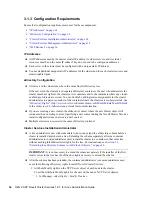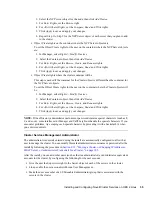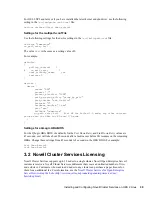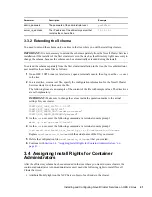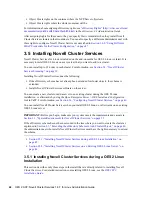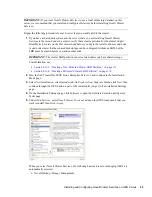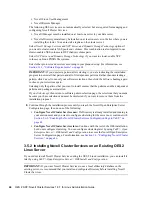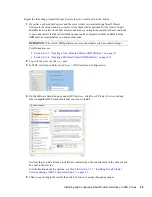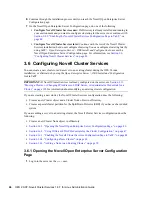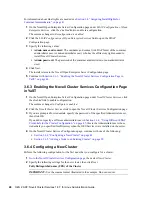
Installing and Configuring Novell Cluster Services on OES 2 Linux
33
no
vd
ocx
(e
n)
7 Ja
nua
ry 201
0
If CIMOM is not currently running when you click
OK
or
Finish
for the task that sends the sensitive
information, you get an error message explaining that the connection is not secure and that CIMOM
must be running before you can perform the task.
IMPORTANT:
If you receive file protocol errors, it might be because WBEM is not running.
To check the status of WBEM:
1
As
root
in a console shell, enter
rcowcimomd status
To start WBEM:
1
As
root
in a console shell, enter
rcowcimomd start
SLP
SLP (Service Location Protocol) is a required component for Novell Cluster Services on Linux
when you are using NCP to access file systems on cluster resources. NCP requires SLP for the
ncpcon bind
and
ncpcon unbind
commands in the cluster load and unload scripts. For example,
NCP is needed for NSS volumes and for NCP volumes on Linux POSIX file systems.
SLP is not automatically installed when you select Novell Cluster Services. SLP is installed as part
of the Novell eDirectory configuration during the OES 2 Linux install. You can enable and
configure SLP on the eDirectory Configuration - NTP & SLP page. For information, see
“
Specifying SLP Configuration Options
” in the
OES 2 SP2: Installation Guide
.
When the SLP daemon (
slpd
) is not installed and running on a cluster node, any cluster resource
that contains the
ncpcon bind
command goes comatose when it is migrated or failed over to the
node because the bind cannot be executed without SLP.
For more information, see
“Implementing the Service Location Protocol” (http://www.novell.com/
documentation/edir88/edir88/data/ba5lb4b.html)
in the
Novell eDirectory 8.8 Administration Guide
.
Xen Virtualization Environments
Xen virtualization software is included with SUSE Linux Enterprise Server. Novell Cluster Services
supports using Xen virtual machine (VM) guest servers as nodes in a cluster. You can install Novell
Cluster Services on the guest server just as you would a physical server. All templates except the
Xen and XenLive templates can be used on a VM guest server. For examples, see
Chapter 12,
“Configuring Novell Cluster Services in a Xen Virtualization Environment,” on page 181
.
Novell Cluster Services is supported to run on a Xen host server where it can be used to cluster the
virtual machine configuration files on Linux POSIX file systems. Only the Xen and XenLive
templates are supported for use in the XEN host environment. For information about setting up Xen
and XenLive cluster resources, see
Section 12.2, “Virtual Machines as Cluster Resources,” on
page 182
.

